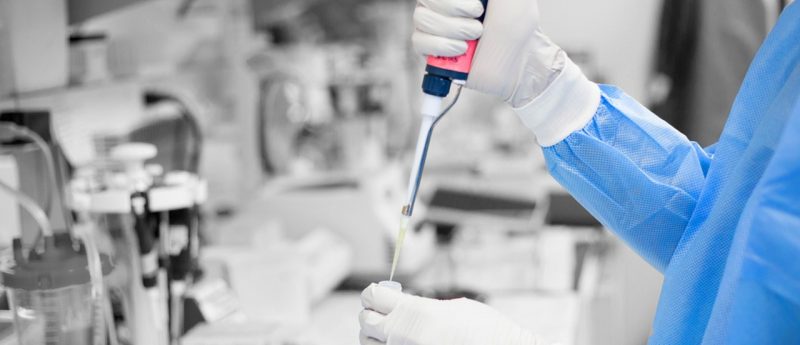Preserving biomechanics during decellularization: an interview with Antony Odell

In this interview, Antony Odell, Tissue Regenix, discusses the challenges of decellularization.
In this interview, Antony Odell, CEO, Tissue Regenix (Leeds, UK), discusses the challenges of decellularization and why it’s important for moving regenerative medicine forward.
Antony Odell
Antony Odell was appointed CEO of Tissue Regenix in October 2008 and has led its growth from a small privately held spin-out to the present time. He has over 30 year’s commercial experience in the medical technology sector. Antony has a strong corporate sector background having worked for Critikon (now part of GE Healthcare, IL, USA), Johnson & Johnson Medicine (NJ, USA) and was European Business Director for its Vascular Access franchise, General Manager (UK & Ireland) for Fresenius (Critical Care & Diagnostics, Germany) and International Knee Manager for Stryker (Howmedica International, MI, USA). Antony was also VP-Medical for BTG (London, UK) when the company was involved in early stage technology commercialization and was CEO for a Scottish NHS cardiovascular device spin-out, Tayside Flow Technologies Ltd (now Vascular Flow Technologies Ltd., UK)
What is Tissue Regenix?
Tissue Regenix is a University of Leeds (UK) spin out focused on creating regenerative medicine devices. The core of our technology, dCELL, allows us to remove cells and DNA from tissue that a patient’s body might reject, and create a scaffold that, when implanted into a patient, regenerates the patient’s own cells and becomes a living repair. This is where medicine is going nowadays; people are living longer and your body will wear out over that period so what you don’t want is metal or plastic implants being put in you.
Why is decellularization important in developing a regenerative medicine?
Decellularization represents an option that allows you to take soft tissue and replace the damaged or diseased part; decellularization provides you with a blank canvas for your body to effect its own repairs. The key part about our process is the biomechanical properties of the tissue that’s decellularized are preserved largely intact. This is a very important step in the quality of the regenerative process that occurs once it’s implanted in the patient. It’s a platform that could be applied to animal or human tissue and really represents a big step forward in the way we can address some key issues, such as heart valve replacement, repair, sports related injuries or chronic wounds.
What are some of the challenges in decellularization and how does dCELL overcome them?
Decellularization has been around a long time, with people throwing all kinds of chemicals at tissues to get rid of cells, and it’s quite easy to do. However, dCELL removes the cells in a way that keeps the biomechanical properties. The patented part of the technology involves the low concentrations of detergents and enzymes that are used to achieve that objective, and this is what the researchers at Leeds found. If you use a more gentle process, you are rewarded with a far superior result than a blitz technique which tries to do everything in one or two steps. dCELL is a gradual approach to cell and DNA removal that preserves as much of the natural properties of the tissue.
Why did you acquire CellRight now?
We’ve known CellRight (TX, USA) for a number of years, since 2013, when we were looking for partners in the US to launch our product DermaPure®, which is decellularized human dermis. At the time, they were focused on getting their own product up and running, so although we didn’t progress a partnership at this time, we kept in touch.
Over the time we’ve known them, CellRight has developed its own core technology, becoming a highly profitable, high growth company in a number of aspects. From a technology, personnel and logistical point of view, it made sense to look at acquisition.
How will CellRight complement Tissue Regenix?
Their core technology platform is focused around bone and, very similarly what we do, they preserve the key growth factors that allow osteogenesis to occur. Bone and soft tissue together covers a large percentage of the core diseases states. Technologically, they parallel our facility and they have also developed an FDA-approved facility so we can strategically start processing material ourselves. A number of CellRight personnel have extensive experience in tissue and they will effectively become the human tissue arm of Tissue Regenix going forward.
What does the future hold for Tissue Regenix and what are your predictions for the future of regenerative medicine?
At Tissue Regenix, we have a very exciting program where we’re due to launch certain products over the next couple of years both from dCELL and CellRight. Over the next 5 years, you’ll see sustained new product launches so I think the focus for us is on commercialization of our technologies and CellRight will help us accelerate that.
In terms of the future of regenerative medicine, I think there’s going to be a huge focus on how regenerative medical technologies translate into clinical practice. A key advantage we have as we move forward is that our products are already being used, but clearly there are other things we can do with our matrices, including dCELL. There are also other things you can do in the way you process bone and cartilage so I think the levels of sophistication of bone technology platforms will increase, possibly with the introduction of cellular components. This will allow us to address many more chronic disease states than we currently can to do. The future is very bright for regenerative medicine.
We’re in a good position; we have two solid platforms, one in bone and one in soft tissue, and there are a number of interesting companies that are beginning to develop technologies which complement our platforms, such as 3D printing. I think it’s a time of tremendous opportunity at a time when there are lots of other pressures; it will be interesting to see how it balances out as technology advances.